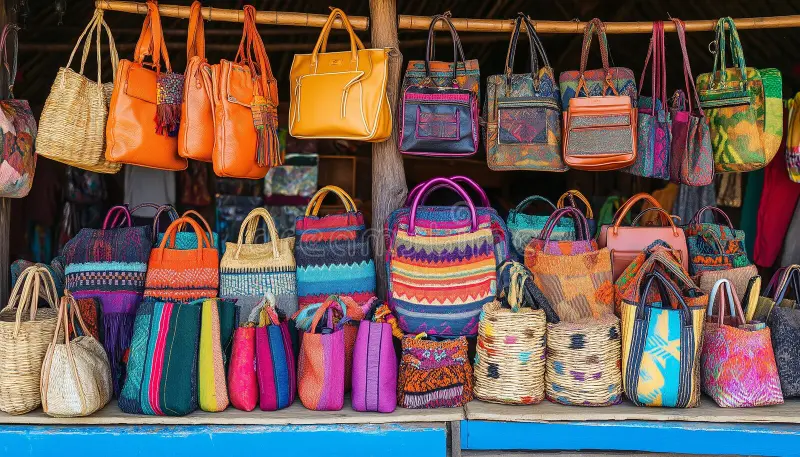Introduction
As the world moves toward greener, more responsible production and consumption practices, packaging has become a central focus in sustainability discussions. For industries that require durable, large-capacity packaging solutions—such as agriculture, construction, chemicals, and retail—woven bags are emerging as a viable, eco-conscious alternative.
Unlike single-use plastics and non-recyclable materials, woven polypropylene (PP) bags are strong, reusable, and customizable, offering both functional and environmental benefits. In this blog, we explore how woven bags contribute to sustainable packaging goals and why more businesses are making the switch.
What Are Woven Bags?

Woven bags are typically made from polypropylene (PP)—a thermoplastic polymer known for its strength, flexibility, and resistance to wear. The term “woven” refers to the interlacing of polypropylene tapes, which creates a fabric-like structure that is both lightweight and durable. These bags are commonly used to package grains, rice, flour, cement, fertilizers, animal feed, and a range of industrial products.
The most popular forms include:
- PP woven sacks
- Block bottom woven bags
- Laminated woven bags
- BOPP woven bags with printed films
These bags can be reused multiple times and are often recyclable, making them a practical choice for companies aiming to reduce their environmental impact.
1. Reusability Reduces Waste
One of the primary advantages of woven bags is their reusability. Unlike traditional plastic packaging that is discarded after a single use, woven bags are built to last through multiple cycles of filling, emptying, and transporting. Their strength and tear resistance mean they can handle heavy loads repeatedly without losing integrity.
By extending the life of packaging materials, woven bags help reduce the volume of packaging waste sent to landfills. For businesses focused on minimizing their environmental footprint, this is a critical step toward circular, low-waste operations.
2. Lower Carbon Footprint Compared to Alternatives
Manufacturing woven polypropylene bags requires less energy and water compared to paper sacks or multi-layered packaging solutions. While both plastic and paper have environmental trade-offs, studies have shown that reusable plastic-based products like woven bags often have a lower carbon footprint when used multiple times.
Additionally, since woven bags are lightweight yet strong, they help lower transportation costs and emissions. A truckload of woven bags can carry more weight with less packaging, reducing the number of trips and fuel consumed in distribution.
3. Recyclability and Material Recovery
Another major advantage of woven bags is their recyclability. Polypropylene is one of the most widely recycled plastics. After a woven bag reaches the end of its life, it can be shredded, melted, and repurposed into other plastic products—such as furniture, plastic lumber, automotive parts, and even new packaging materials.
Companies that partner with plastic recovery facilities or implement their own take-back or recycling programs can ensure that their packaging waste stays out of landfills and re-enters the production cycle, aligning with circular economy principles.
4. Customization for Efficient Use
Woven bags can be custom-designed to suit the exact needs of a business or industry. This includes adjusting the size, strength, coating, printing, and closure mechanisms. By tailoring the bag to the product, businesses can avoid over-packaging and reduce material usage—both key principles in sustainable packaging design.
For example, block bottom woven bags can stand upright and are easier to stack, reducing wasted storage and transport space. BOPP laminated woven bags not only look attractive but also offer moisture resistance without the need for additional inner liners.
This kind of efficiency reduces both environmental and economic costs.
5. Supporting Green Branding and Consumer Expectations
Today’s consumers are becoming more eco-conscious, and many prefer to buy from brands that prioritize sustainability. Using woven bags as part of a green packaging strategy allows companies to highlight their environmental values through messaging, labels, or certifications printed directly on the packaging.
Printed woven bags offer high-quality graphics and branding opportunities, allowing companies to communicate their commitment to sustainability while still delivering a strong visual identity. This appeals to both B2B and B2C markets and enhances brand trust.
6. Ideal for Bulk and Long-Term Storage
Sustainable packaging isn’t just about materials—it’s also about performance and longevity. Woven bags are especially valued for their ability to withstand extreme storage conditions, moisture, rough handling, and long shipping durations.
Since fewer damaged products mean less repackaging and waste, woven bags help reduce the overall resource consumption associated with returns, spoilage, and reprocessing. In industries like agriculture or chemicals, where shelf life and integrity matter, woven bags are a dependable choice that aligns with sustainable logistics goals.
7. Growing Relevance in India’s Packaging Landscape
India is experiencing a surge in awareness about plastic pollution and sustainable manufacturing practices. With government initiatives like the Plastic Waste Management Rules and the promotion of eco-friendly packaging alternatives, woven bags are gaining momentum as a scalable, locally available solution.
Woven polypropylene bags are already widely produced in India, supporting local economies while reducing dependence on imports. Indian manufacturers are also investing in innovations like biodegradable woven bags and hybrid woven-paper solutions to further reduce environmental impact.
Also Read: The Carbon Footprint of Woven Bags vs. Paper and Jute: What the Data Says
Final Thoughts
As sustainability continues to shape the future of packaging, woven bags stand out as a smart, durable, and eco-conscious choice. Their reusability, recyclability, and efficiency make them ideal for companies looking to balance performance with environmental responsibility.
Whether you’re in agriculture, construction, retail, or logistics, integrating woven bags into your packaging strategy can help you meet sustainability goals, satisfy customer expectations, and reduce long-term costs.
In a world where every decision counts for the planet, switching to woven bags isn’t just a smart business move—it’s a step toward a greener future.
